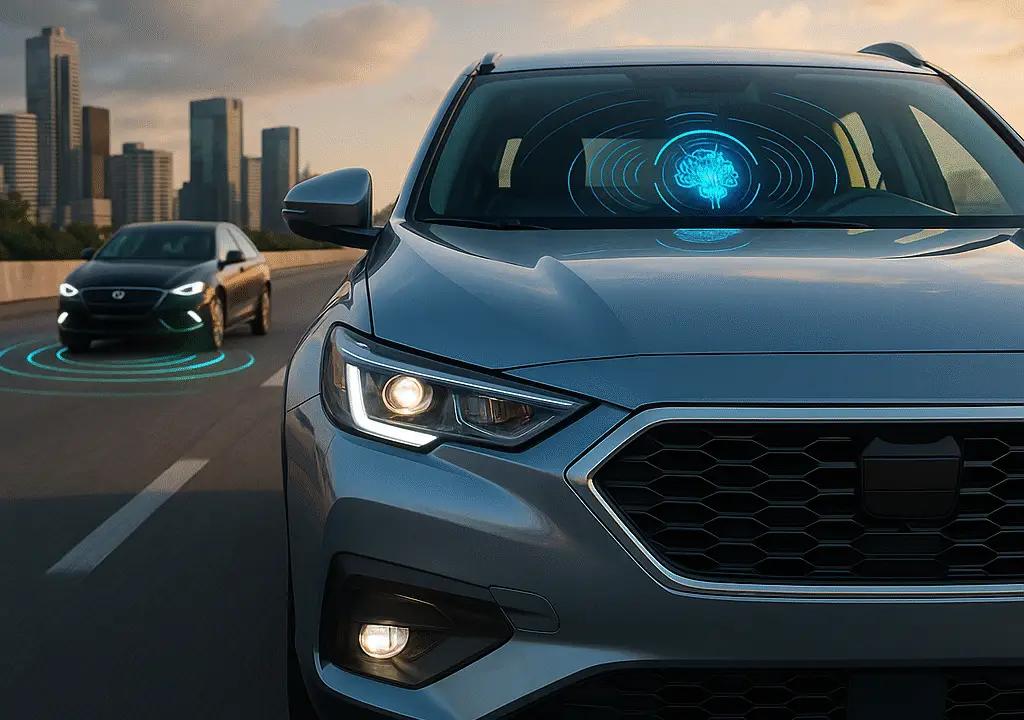
In recent years, artificial intelligence (AI) has transformed multiple industries, and the automotive sector is one of the most rapidly evolving. Beyond powering self-driving cars, AI has found an indispensable role in modern car safety systems. From preventing accidents to assisting drivers in critical moments, AI-driven technologies are reshaping the way we think about road safety. This article explores how AI in car safety systems is improving vehicle performance, reducing accidents, and paving the way for smarter mobility.
AI is no longer just a futuristic concept; it’s embedded in the cars we drive today. Advanced sensors, cameras, and machine learning algorithms allow vehicles to “think” and “respond” to real-world scenarios in real time. Unlike traditional safety systems, AI can predict and prevent accidents rather than simply responding after they occur.
Key areas where AI is making an impact include:
One of the most critical contributions of AI in car safety systems is collision detection and avoidance. By analyzing data from radar, LiDAR, and cameras, AI algorithms can recognize obstacles, pedestrians, or vehicles ahead. If a potential crash is detected, the system alerts the driver and, in many cases, automatically applies the brakes.
This technology significantly reduces rear-end collisions and is now a standard feature in many new vehicles. For instance, Tesla’s Autopilot and Volvo’s City Safety are AI-powered systems designed to minimize accidents in high-traffic conditions.
Highway driving can be monotonous, often leading to lapses in concentration. AI-powered lane keeping assist helps prevent accidents caused by unintentional drifting. Cameras track lane markings, and the system gently corrects steering if the car veers off course.
Similarly, adaptive cruise control uses AI to maintain a safe distance from the vehicle in front, automatically adjusting speed as traffic conditions change. Together, these systems make long drives safer and less stressful for drivers.
Traditional braking relies on driver reaction, which can take valuable seconds in emergencies. AI-enabled autonomous emergency braking (AEB) detects hazards faster than human reflexes. If a driver fails to respond, the AI system activates the brakes instantly, significantly reducing the severity of collisions.
According to research by the Insurance Institute for Highway Safety (IIHS), cars equipped with AEB have 50% fewer rear-end crashes, showcasing the real-world benefits of AI integration.
Driver distraction and fatigue are leading causes of road accidents. AI-based driver monitoring systems use in-cabin cameras and sensors to track eye movement, head position, and steering behavior. If signs of drowsiness or inattention are detected, the system issues alerts or vibrations to regain the driver’s focus.
Some advanced systems, like those in BMW and Mercedes-Benz vehicles, even suggest taking a break when fatigue levels become noticeable. This proactive safety feature could save countless lives.
Car safety isn’t just about avoiding collisions—it also involves ensuring vehicles are in optimal condition. AI algorithms can analyze data from various vehicle components to predict failures before they happen. For example, AI can alert drivers when brake pads are wearing out or when tire pressure could cause a blowout. Preventive maintenance powered by AI helps avoid breakdowns and enhances road safety.
While fully autonomous cars are still developing, the role of AI in their safety systems is paramount. Self-driving vehicles rely heavily on AI to interpret complex road environments, make split-second decisions, and ensure passenger safety. Technologies such as sensor fusion, deep learning, and predictive analytics allow autonomous vehicles to anticipate traffic flow, react to hazards, and minimize accidents.
The vision for the future is that AI-driven cars will reduce human error—which accounts for nearly 94% of traffic accidents worldwide—making roads safer for everyone.
Despite the advancements, AI in car safety systems isn’t without challenges. Ethical dilemmas, such as how AI should react in unavoidable crash scenarios, are hotly debated. Additionally, concerns about cybersecurity arise as cars become increasingly connected. A hacked AI system could lead to catastrophic consequences, highlighting the need for strong safeguards and regulations.
Looking ahead, AI will continue to evolve with even more advanced features:
As these technologies mature, we move closer to a future where zero-accident roads may become a reality.
The role of AI in modern car safety systems cannot be overstated. From collision avoidance and lane assist to driver monitoring and predictive maintenance, AI is making vehicles smarter, safer, and more reliable. While challenges like ethics and cybersecurity remain, the potential for AI to drastically reduce road accidents is undeniable.
As car manufacturers continue to innovate, AI will become the backbone of not just autonomous vehicles, but of everyday driving safety. Ultimately, the integration of AI in car safety systems is not just about technology—it’s about saving lives.
AI is used in car safety systems for collision detection, lane-keeping assist, adaptive cruise control, emergency braking, and driver monitoring. It processes real-time data from sensors and cameras to predict and prevent accidents.
AI analyzes traffic patterns, driver behavior, and surrounding vehicles to anticipate risks. By issuing alerts or taking automatic actions like braking or steering corrections, AI helps prevent accidents before they occur.
Many modern brands, including Tesla, BMW, Mercedes-Benz, Volvo, and Toyota, integrate AI-powered features such as autonomous emergency braking, lane assist, and adaptive cruise control.
Yes. AI-based driver monitoring systems track eye movements, head position, and steering behavior to identify signs of fatigue or distraction. If detected, the system alerts the driver or recommends a break.
AEB is an AI-powered system that automatically applies brakes when it detects an imminent collision, reducing the severity of crashes or preventing them entirely.
AI safety systems are highly reliable and proven to reduce accidents significantly. However, they are designed to assist drivers, not replace responsible driving. Regular updates and cybersecurity safeguards are also essential for reliability.
Future AI trends include Vehicle-to-Everything (V2X) communication, advanced pedestrian detection, predictive maintenance, and AI-based weather adaptation for safer driving in all conditions.